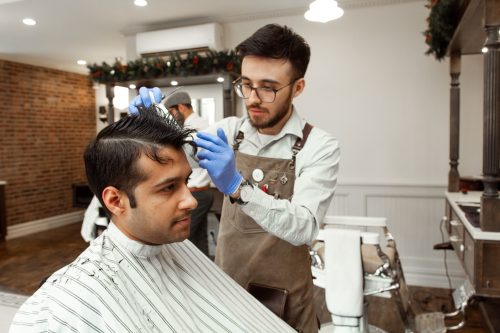When it comes to matters of style, we’re not ones to argue with The Blues Brothers. Or Elvis Costello. Or Muhammed Ali. Or any of the besuited criminals from Reservoir Dogs. They all redefined what it was to be cool in their own way, and all of them wore Ray-Ban Wayfarers.
That’s not a coincidence. The go-to style of sunglasses for generations of discerning gents, Wayfarers are – we hate this word – timeless. They’re like the biker jacket of eyewear, only more wearable. They suit most face shapes, men and women. They work with your suit for a summer wedding or shorts and a T-shirt at the beach, and practically every dress code in between. And provided you don’t sit on them, they’ll last.
Compared to almost any other style, Wayfarers have trendproof staying power. Only aviators really come close. Round frames, wraparounds, those small Matrix-inspired cybergoth lenses – they’re all occasionally on trend, but while their time in the sun lasts about as long as the average British summer, Ray-Ban’s signature lens has been basking for more than 60 years.
A Brief History
The Wayfarer has always been cool, ever since its 1956 inception. Created by Bausch & Lomb – the old parent company behind Ray-Ban – the man responsible was Raymond Stegeman, a designer that wanted to pivot away from traditional metal frames and use acetate. The trapezoidal shape and sturdy arms made them a mid-century design classic, worn in the sixties by the likes of Bob Dylan and Andy Warhol.
After a relatively quiet spell in the seventies, Wayfarers exploded in popularity in the eighties, partly due to The Blues Brothers and partly due to a shrewd product placement deal that saw them on everything from Miami Vice to Tom Cruise’s grinning mug in Risky Business. After this, Wayfarers meant energy and rebelliousness.
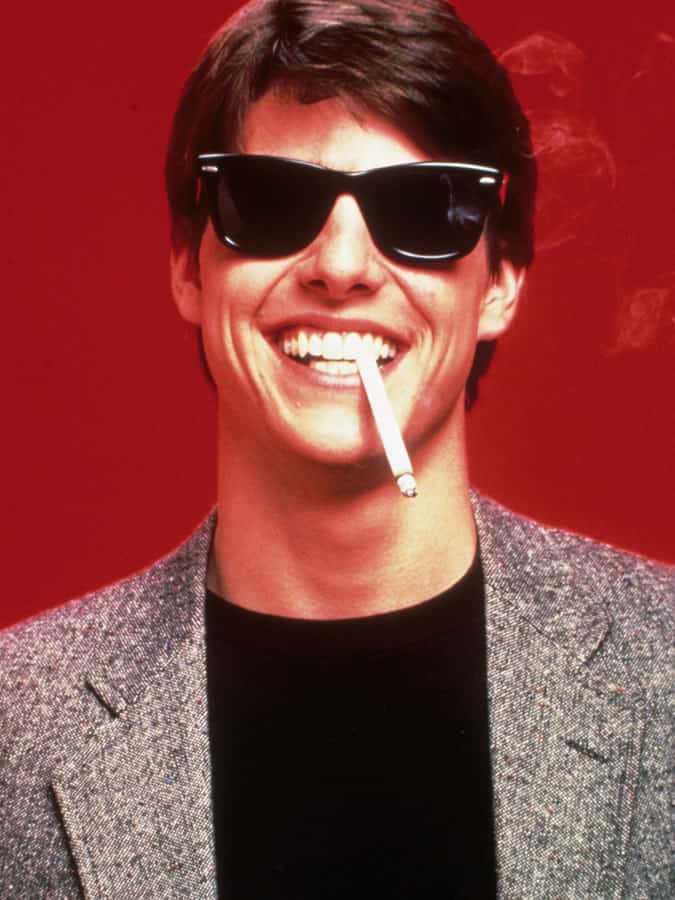 Tom Cruise wearing Ray-Ban Wayfarers in Risky Business (1983)
Tom Cruise wearing Ray-Ban Wayfarers in Risky Business (1983)
The trend wheel, however, spun again. In the nineties, despite Quentin Tarantino’s best efforts, plastic sunglasses were dominated by the likes of Oakley, with wraparound styles throwing more retro designs into the shade. Bausch & Lomb sold Ray-Ban to the Luxottica Group in 1999 for $640m, and the Wayfarer was relaunched again in 2001.
Ever since, the style has been adopted by subcultures as diverse as nu rave and Pitti peacocks, its place in the menswear hall of fame fully cemented.
The Right Face Shape
This is a democratic style and Wayfarers still suit most face shapes – but not all.
“Wayfarers are most flattering for people with round and oval faces, because the square of the frame complements the wearer’s features,” says Kate Pop, style advisor at Eyewear Connection. “As a rule of thumb, you want to choose an eyewear shape that contrasts your facial features. So square or rectangular Wayfarers will soften rounder contours of your face and balance your look.”
That doesn’t mean Wayfarers are off-limits to those with angular bone structures. Ray-Ban offers an abundance of customisation choices, with different sizes a plenty. The standard size is said by the brand to correctly fit 90 per cent of people, but there’s a definite way to check: just use a credit card.
Place one edge, magnetic strip vertical, in the centre of your nose. If the other edge ends at the corner of your eye (A), Ray-Ban’s Standard size will fit. If it extends well beyond the end of the eye (B), you need the Small size. If the credit card does not reach the end of the eye, you should go for a Large size (C):
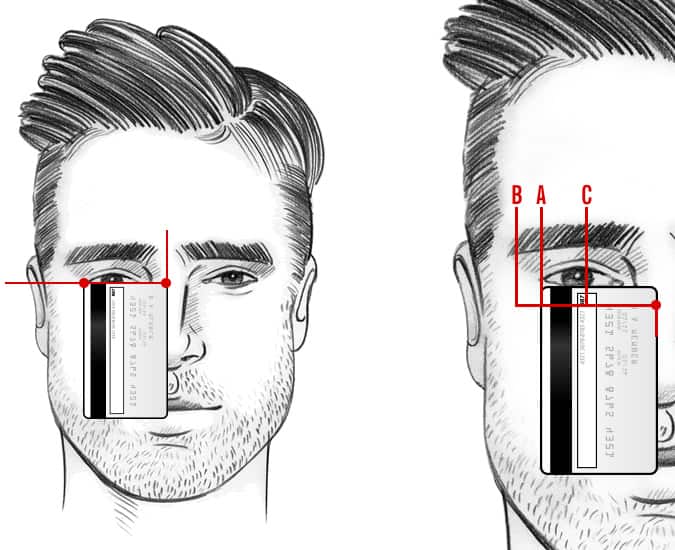
Ray-Ban Sizing
Getting the right fit for your sunglasses isn’t quite as complicated as your tailoring, but it’s not far off. If you have an old pair of Ray-Bans, look at the numbers printed inside the left temple. You’ll see three numbers on most models, a bit like a sort code (eg, 50-20-150).
The first is the lens diameter, the second is the width of the bridge across your nose and the third, if there is one, is the length of the temples (or arms) – all in millimetres.
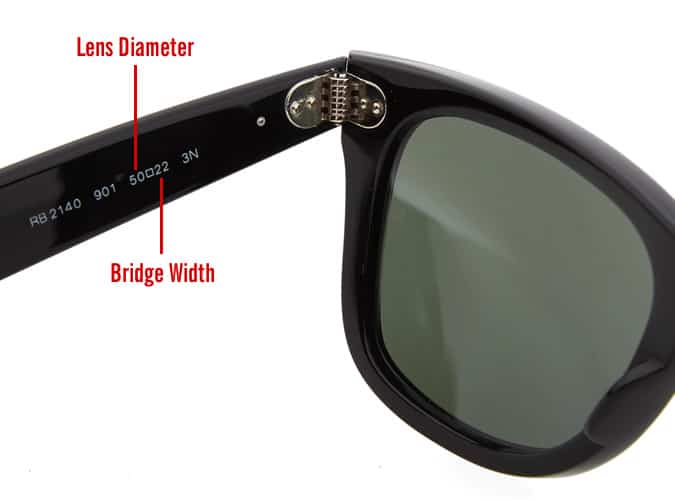
Lenses
The first number measures the width of the lens from the bridge. This should be used not only to ensure the glasses are in proportion to your face, but to prevent light and UV rays creeping in at the sides. Occasionally, the vertical length of the lenses will also be shown.
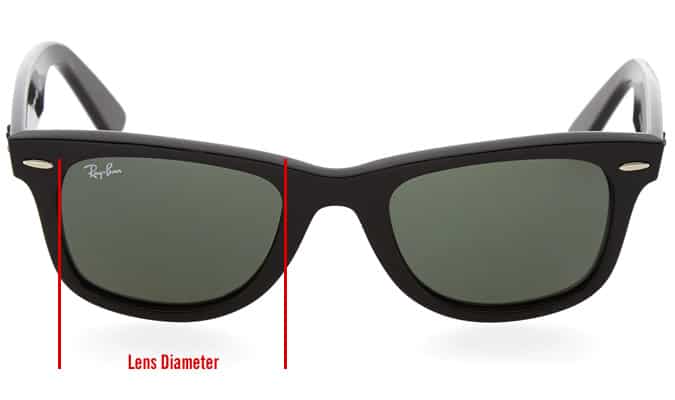
Bridge
The second number in the sequence refers to the width of the bridge – the acetate section between the lenses. This is important because it will affect how comfortably your glasses sit on your nose. Typical widths are 12-26 millimetres, so measure your own nose for a close (but not tight) fit.

Temple
The final number refers to the length of the temple or arms. This isn’t always shown but it’s another factor worth considering because it affects how comfortably the glasses sit on your ears.
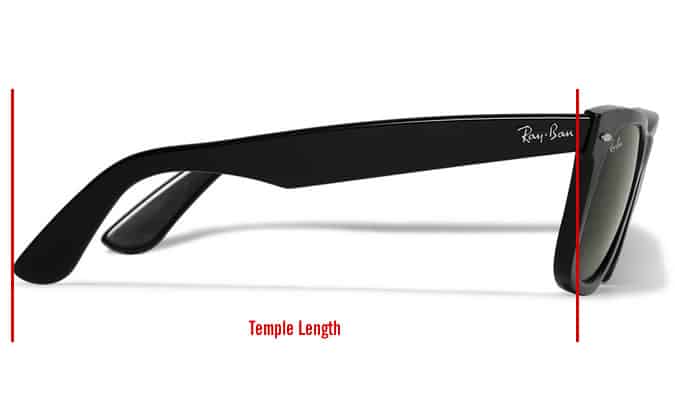
What To Wear With Wayfarers
Strictly speaking, this is a casual style, but that hasn’t stopped them breaking out of their intended dress code. “The Wayfarer has quickly become a flexible option,” says Callan Smith-Sheerin, style writer at Vision Direct.
“The bold frames make them ideal for eyeglasses around the office, as well as for sunglasses on bright days.”
With A Suit
As Jake and Elwood proved, there’s no shame in pairing Wayfarers with a suit, but observe the usual rules when wearing sunglasses with anything formal. Keep it as relaxed as possible, opt for tortoiseshell with any tailoring that isn’t black, and for god’s sake remember to take them off when you go indoors.
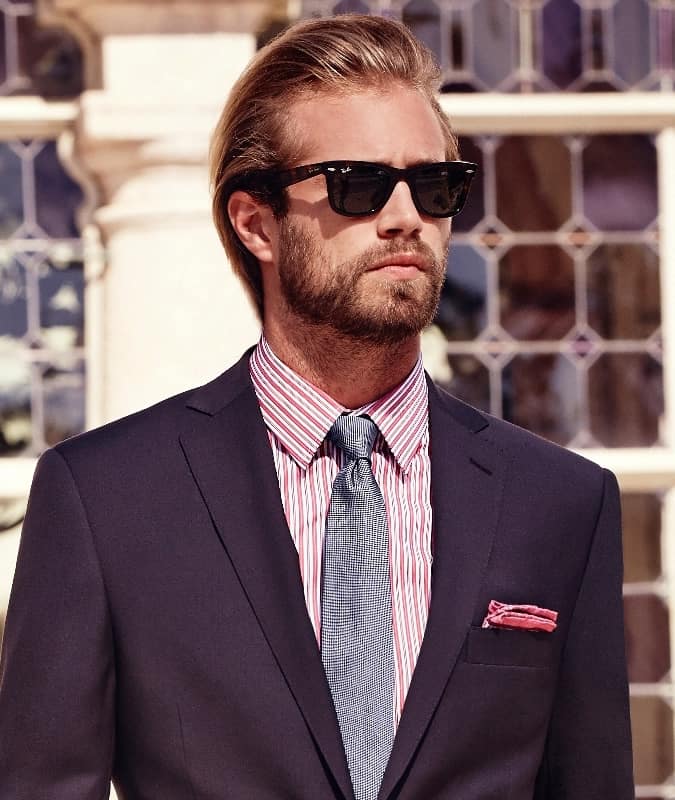 House of Fraser
House of Fraser
Smart Casual
This is Wayfarers’ natural habitat. Whether you’re going for tailored separates, a crisp Oxford button-down or following DiCaprio’s lead in The Wolf Of Wall Street with a smart polo shirt, you can’t fail to look stylish.
 Eidos Napoli
Eidos Napoli
Casual
Resist the urge for statement frames or lenses. This is a menswear classic, so avoid the Club 18-30 look by sticking to darker colours and wear them with other off-duty staples such as a biker jacket or well-fitting crew neck T-shirt.
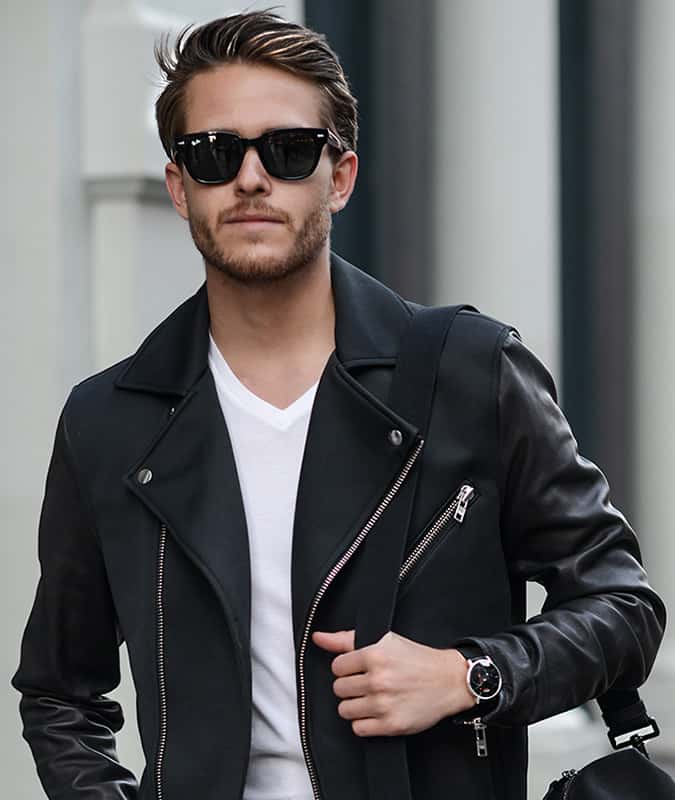 I AM GALLA
I AM GALLA
Pick Your Pair
Classics
As the founding father of Wayfarers, the classic shape is the very first edition, favoured by the likes of Bob Dylan. The cat-like silhouette is a little to the left of usual tastes, but these are as authentic as they get.

New Wayfarer
Wayfarers mark II. The newest design is relatively similar to the original, yet this style minimises the tilt to the frame for a lighter wear and increased comfort. And, despite a wider diameter across the eyes than the original design, the new Wayfarers are usually a less cumbersome fit.

Justin
Inspired by the original Wayfarers but larger in the frame and more rectangular in the lens, the Justin is a more casual design and very beach friendly. As such, the colour options are much wider (not that we’d strictly recommend sunset-red lenses).

Wayfarer Eyeglasses
It was only a matter of time before Wayfarers hit the spectacle market. Ever since, City workers and creatives alike have adopted the wider frames for a look more Mad Men than middle management.

How To Spot Fakes
Be cautious of the Roy-Bins, especially if you’re buying online and not from a selection laid out on a Thai beach towel (in which case we suspect you know what you’re doing).
Yes, you have to pay more for the real deal, but full UV blocking will actually protect your vision and this is one of the most affordable ways to invest in genuine designer gear. Use this checklist to make sure.
- ‘Ray-Ban’ should be printed at the top of the right lens, not the left
- A small ‘RB’ should be etched, not painted, into the left lens
- True Wayfarers have oversized metal hinges. Don’t accept anything else
- New models should have ‘Hand Made in Italy’ printed on the inside right temple
- Your glasses should come with a leather case complete with a round printed or embossed logo that says, ‘100% UV protection – Ray-Ban – Sunglasses by Luxottica’. The popper will also have a logo on it
- New models come with a cleaning cloth. This will be packaged in plastic and feature the Ray-Ban logo
- If you’ve bought polarized lenses, check by looking through your glasses in front of a computer screen and then rotate them 60° – if they’re polarized they will turn black


